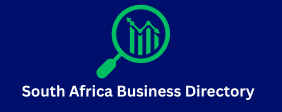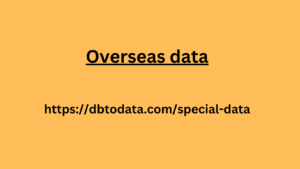Any business needs promotion, whether it is a chain of coffee shops with several outlets or a small flower shop. You can use offline marketing, but to attract a wider audience or increase sales, you should use online tools. Online tools allow you to interest new customers and remind existing ones about your business. In this article, we will explain the types of online advertising and how they can benefit a company.
What is online advertising?
Gaining instant access to overseas business contacts can significantly enhance your outreach efforts, allowing you to tap into new markets and expand overseas data your clientele. Here’s a detailed guide on how to effectively access and utilize overseas business contact data, being able to connect with international partners and clients can give you a leg up over competitors who are limited to local markets.
Online advertising promotes goods and services using various online tools. Examples include ads on websites and mobile applications, commercial accounts on social networks, and email newsletters. These methods help expand the customer base, increase sales, improve brand recognition, and compete with larger players in the niche. Let’s look at the example of a flower shop. The shop creates a social media account where it posts beautiful photos of bouquets and information about promotions. This approach attracts the attention of people interested in buying flowers.
The shop also places ads on online maps. When potential clients search for a flower shop near their home or work, the establishment appears in search results above its competitors. Finally, the shop launches contextual ads for keywords like “buy flowers [city name].” When people search for flower shops in their city, they see a link to the store’s website in the search results. When businesses promote themselves offline, they find it challenging to track their audience. For example, thousands of motorists pass by a billboard every day, and not all of them are potential clients. Online promotion makes it easier to contact interested people, allowing you to determine who sees the ad.
What are the types of advertising on the Internet?
Contextual advertising
Contextual advertising shows ads to people based on their interests, behavior, or search queries. The term “contextual” refers to how these ads display in a specific context—when users search for goods, services, or information online. For example, if someone types “chocolate cake recipe” into a search engine, the results show websites with recipes, as well as sites selling baking pans and ingredients. Even when that person leaves the search engine and visits another site, they may see offers from culinary stores for a while.
You can launch contextual advertising using special services like Yandex Direct. This tool allows you to place ads on Yandex and its partners’ sites to attract an interested audience—people who have searched for goods and services similar to yours. This format suits almost every type of business. For example, promotion in Search helps companies working with situational demand, such as food delivery, laundry services, or equipment repair. Customers often know what they need and search for a solution, making it the perfect moment for your brand to show its offer.
Another option is to engage users in the sales funnel and gradually introduce them to your company, motivating them to buy. This approach benefits those who create custom furniture, teach, or offer repair services. The minimum amount to replenish Yandex Direct is 300 rubles plus VAT at 20%.
Targeted advertising
Targeted advertising appears on social networks and shows ads only to people with certain characteristics. For instance, you can target women aged 30 to 40 from Moscow with above-average income. Advertisers choose audience parameters, specifying gender, age, geolocation, marital status, interests, and more. Targeted ads can reach those who have not yet shown interest in purchasing goods or services or searching for them online.
Businesses use knowledge what is Internet advertising and what types are there? about potential clients to select their audience. For example, if group fitness classes attract women aged 25 to 40 who subscribe to healthy lifestyle communities, you might grab their attention with a discount on a sports club membership. This format benefits businesses that clearly understand their target audience. Costs depend on the platform, niche, and the minimum budget of the advertising system.
Native advertising
Native advertising includes texts, images, videos, ru number list elements integrated into the content of a website or application. These ads resemble a natural element of the content. For instance, a cooking website might post a recipe that mentions certain kitchen appliances—the advertiser’s products. Another example could be an article on a travel forum where the author discusses amazing vacation spots and mentions a hotel that sponsors the post.
The goal of native advertising is to attract attention to the brand’s range unobtrusively and organically. This format helps create a positive impression of the business and increases interest without direct advertising. Native advertising often requires a larger budget than targeted or contextual advertising. Due to its high cost, it may not suit small businesses, as materials must be prepared from scratch and used only once, unlike other formats that can be shown repeatedly.
Promo Pages
Promo Pages increase people’s trust in a brand and highlight the benefits of a product or service. Here’s how it works: An ad featuring an image, title, and description shows to an audience of 96 million users in the Yandex Advertising Network.
When a user clicks on the ad, they reach a separate advertising page where the brand discusses itself and its product through images, text, or video. After reviewing the materials on the brand’s Promo Page, interested users can visit the company’s landing page. Promo Pages help solve several business challenges:
- Differentiate from competitors: You can explain why your dry cleaner is better than others.
- Create new demand: Introduce a product or service that buyers have never considered before, such as a voice-controlled multicooker.
- Announce discounts: Show ads to the most interested audience during promotions or sales.
For example, a person reading an article about decorating an apartment for the
New Year might find recommendations from a designer alongside links to garlands and other accessories available in the advertiser’s store. Although the text aims to draw attention to the products, it does so naturally within the context of useful information for the reader. The key feature of Promo Pages is the long interaction time with users. On average, readers engage with advertising articles for over two minutes.
You can quickly understand how to structure and work with Promo Pages through a short free course. If you successfully complete it and pass the verification test, you can reduce the initial account replenishment for launching Promo Pages from 100,000 to 50,000 rubles (excluding VAT).
Placement with bloggers
Bloggers or influencers are popular figures on the Internet who have many followers on social networks, messengers, or video platforms. Companies order publications from these individuals to reach potential clients among their audience. For example, if a person has a favorite blogger who discusses family and motherhood, they may perceive product recommendations from that blogger as trustworthy. If the blogger shares their experiences with a baby crib or a winter jumpsuit, the subscriber might become interested in the product.

